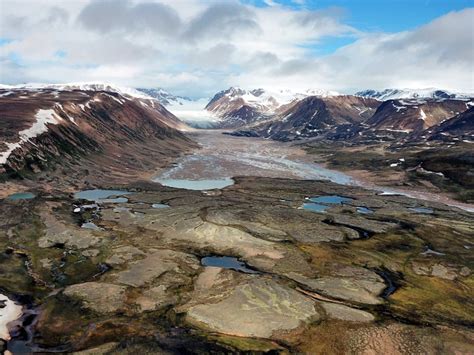Story by Doyle Rice, USA TODAY
Carbon dioxide levels in Earth’s atmosphere are at their highest point in human history, a study released in early December reports.
In fact, according to the study, it has been about 14 million years since the level of carbon dioxide (CO2) in our atmosphere was this high. That’s long before modern humans appeared on the scene.
At that time, Earth’s temperature was as much as 9 degrees Fahrenheit warmer than today, study lead author Bärbel Hönisch, a geochemist at Columbia University’s Lamont-Doherty Earth Observatory, told USA TODAY.
The Greenland and West Antarctic ice sheets didn’t yet exist, and sea level probably was more than 40 feet higher than today, said University of Pennsylvania meteorologist Michael Mann, who was not part of the study.
Climate is highly sensitive to greenhouse gases
Fourteen million years is much longer ago than earlier assessments have found. The new report “asserts that long-term climate is highly sensitive to greenhouse gas, with cascading effects that may evolve over many millennia,” according to a statement from Columbia University.
Levels of CO2 – the greenhouse gas most responsible for global warming – are now at 420 parts per million (ppm) in the atmosphere, up from 280 ppm before the Industrial Revolution. Global temperatures have also risen over that time, by about 2 degrees.
“We have long known that adding CO2 to our atmosphere raises the temperature,” Hönisch said. “This study gives us a much more robust idea of how sensitive the climate is over long time scales.”
Study co-author Gabriel Bowen, a professor at the University of Utah, said “it’s clear we have already brought the planet into a range of conditions never seen by our species.”

How do we know what CO2 levels were like that long ago?
Scientists have only directly measured CO2 levels in our atmosphere for the past few decades, so they must use “proxy” sources to determine past levels. For this, scientists analyze materials such as air bubbles trapped in ice cores, the chemistry of ancient soils and ocean sediments, and the anatomy of fossil plant leaves.
Why was CO2 so high back then?
Ancient levels of CO2 were higher millions of years ago because of “all-natural processes” such as volcanoes, which produce “a lot of carbon dioxide,” Hönisch said.
Also, weathering of rocks on land can act to release CO2 into the atmosphere, she added. In fact, a recent study in Nature found that rocks can release CO2 at levels that can rival the amount volcanoes release.
What does this mean for our future? Are we on track to be 9 degrees warmer?
All of this doesn’t mean, however, that we are committed to that much additional warming and sea-level rise, Mann said. He said those high carbon dioxide levels were maintained not for decades or centuries but for millions of years, which made it far more difficult for ice sheets to form and help cool the planet.
“We can very likely prevent such levels of warming, ice sheet loss and sea level rise if we reduce carbon emissions substantially in the years ahead,” Mann said.
Study co-author Dana Royer, a paleoclimatologist at Wesleyan University, summed it up this way: “If you want us to tell you what the temperature will be in the year 2100, this (study) does not tell you that. But it does have a bearing on present climate policy. It strengthens what we already thought we knew. It also tells us that there are sluggish, cascading effects that will last for thousands of years.”
We’re in ‘uncharted waters’
Indeed, “the study confirms the very close relationship between CO2 and global temperatures, and the fact that we’re headed toward CO2 levels not seen in 14 million years, as established in the study, indeed underscores that we’re in uncharted waters,” Mann said.
Read More From PatriotAmerican
The study also “highlights the threat of continued fossil fuel burning at a critical time, as policymakers in Dubai are determining the potential future course of climate action as the window for limiting warming below catastrophic levels begins to close.”

